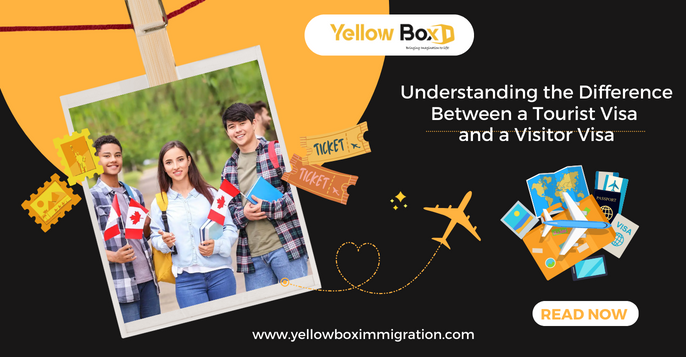Travelling internationally requires not just packing and planning but also navigating the world of visas. Two terms you’re likely to encounter are “tourist visa” and “visitor visa.” While they might sound synonymous, and indeed there’s some overlap, understanding their distinctions is crucial for ensuring your trip goes smoothly.
Introduction to Visas
A visa is a formal endorsement on your passport that allows you to enter, leave, or stay for a specified period in a foreign country. Different types of visas cater to different purposes of visits, such as tourism, business, or education.
Tourist Visa: Gateway to Leisure and Exploration
A tourist visa is designed for those travelling for leisure or sightseeing purposes. This visa type is suitable for people who want to vacation in a foreign country, visit landmarks, and enjoy recreational activities without engaging in any business or professional activities.
Characteristics of Tourist Visas:
- Purpose: The sole purpose is tourism. This includes activities like visiting historical sites, attending festivals, or enjoying a scenic or cultural tour.
- Duration: Typically short-term, the duration of tourist visas varies by country but generally ranges from a few days to several months.
- Restrictions: You cannot engage in any business activities, employment, or long-term academic studies.
Visitor Visa: For More Than Just Tourism
Visitor visas cover a broader spectrum of activities beyond just tourism. This category can include visiting family or friends, participating in short business engagements, or other non-tourist activities.
Types of Visitor Visas:
- Family or Personal Visits: This includes visits to meet friends or relatives, which might require a longer stay than what is generally allowed on a tourist visa.
- Business Visits: These are for individuals participating in short-term business activities such as meetings, seminars, or negotiations. Importantly, these visas do not permit taking up employment.
- Medical Visits: Some countries offer specific visitor visas for those seeking medical treatment.
- Short Study or Training Programs: These allow engagement in short-term courses that don’t result in an academic degree.
Like tourist visas, visitor visas are temporary and don’t allow for immigration or long-term stays.
Applying for a Visa: A Step-by-Step Guide
Regardless of the visa type, the application process typically involves several standard steps, which can vary slightly from one country to another.
- Application Form: Completion of the required form, which is often accessible online via the destination country’s official embassy or consulate website.
- Necessary Documentation: You must gather documents that may include:
- Valid passport with sufficient blank pages
- Recent photographs conforming to the required specifications
- Proof of financial means to cover your stay
- Travel itinerary and accommodations
- Letter of invitation if you are visiting friends or family
- Additional documents depending on the visa type, such as business invitations or medical reports.
- Interview: Some countries require a visa interview to better understand your travel intentions and verify the information provided in your application.
- Visa Fee: Payment of the visa application fee is generally required, and the amount can vary.
- Processing Time: Visa processing times can range from a few days to several weeks. Planning and applying well in advance of your travel date is advisable.
Choosing Between a Tourist Visa and a Visitor Visa
When planning your travel, deciding between a tourist and a visitor visa involves several considerations:
Understand Your Purpose: Clarify the main reason for your visit. If your activities are purely leisure-related, a tourist visa is appropriate. For other activities like family visits or business meetings, a visitor visa is necessary.
Duration and Activities: Consider how long you will stay and what you will do. Some visitor visas might allow longer stays than tourist visas, depending on the country.
Country-Specific Requirements: Visa regulations can vary widely. Always check the embassy’s website of the country you’re visiting for the most accurate and detailed information.
FAQs About Tourist and Visitor Visas
Q: Can I change my visa type while in the country?
A: Generally, no. Visa types are specific to the purpose declared before entering the country, and changing this purpose can require you to leave the country and reapply.
Q: What happens if I violate the terms of my visa?
A: Violating visa conditions, such as working on a tourist visa, can lead to severe penalties, including fines, deportation, and entry bans.
Q: How early should I apply for a visa?
A: You should apply as soon as your travel plans are firm. Check processing times on the embassy’s website and allow extra time for unexpected delays.
Conclusion
Understanding the differences between tourist visas and visitor visas can ensure that your trip is not only enjoyable but also compliant with international travel regulations. Whether you are exploring ancient ruins, visiting family, or attending a business workshop, the right visa will facilitate a hassle-free journey. Navigating visa applications and ensuring you choose the right one can sometimes be complex and demanding.
That’s where Yellow Box Immigration, the best immigration services in Abu Dhabi comes in. As the UAE’s most trusted immigration consultant, we stand as the leading immigration consultancy in the region. Our team of highly qualified immigration experts is dedicated to guiding you with the most suitable course of action for your travel or immigration needs. We specialise in providing clear and practical solutions tailored to a variety of needs, including immigration, abroad jobs, work permits, and visa applications.
So, if you’re planning to migrate abroad or need assistance with any immigration-related services, remember that Yellow Box Immigration is here to help. Trust us, the best immigration consultancy in the UAE, to support your journey towards a successful visa application or immigration process. Let us take the stress out of your travel plans so you can focus on what truly matters—enjoying your trip.

